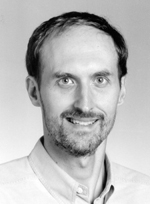Bio: Larry Larson is the first holder of the Communications Industry endowed chair at the Jacobs School. He joined the UCSD faculty in 1996, after a 16-year career at Hughes Research Laboratories. There, he pioneered the development of analog integrated circuits and low-noise HEMTs in III-V technology, as well as microwave integrated circuits in SiGe HBT technology. Larson received his PhD from UCLA in 1986. He has published over 150 papers in peer-reviewed journals and international conferences, written several book chapters, edited or co-authored three books, and holds 25 patents. He is an IEEE Fellow and co-winner of the 1996 Hughes Electronics Lawrence Hyland Patent Award and the IBM Microelectronics Excellence Award.
Research: Professor Larson's research ranges from electronic circuits and systems, to electronic devices and materials. Larson develops high-speed circuits based on InP (indium-) and GaAs (gallium arsenide) as well as silicon technology. He also explores applications for micromachining technology in the manufacture of high-speed integrated circuits, and studies new packaging technology for them. Larson's current research is specifically also focused on low-power circuit design and RF design techniques for wireless communications. He recently completed 'CDMA Mobile Radio Design,' a book on how to design the hardware and software for wireless handsets based on code-division multiple access technology. CDMA is the foundation of all third-generation wireless technologies, including Europe's W-CDMA standard and CDMA2000. As director of the industry-sponsored Center for Wireless Communications (CWC) at UCSD, Larson is in a unique position to comment on the development and deployment of 3G wireless, including new generations of circuits. He oversees a wide range of ongoing research projects, with funding from CWC's 17 corporate members.
|

